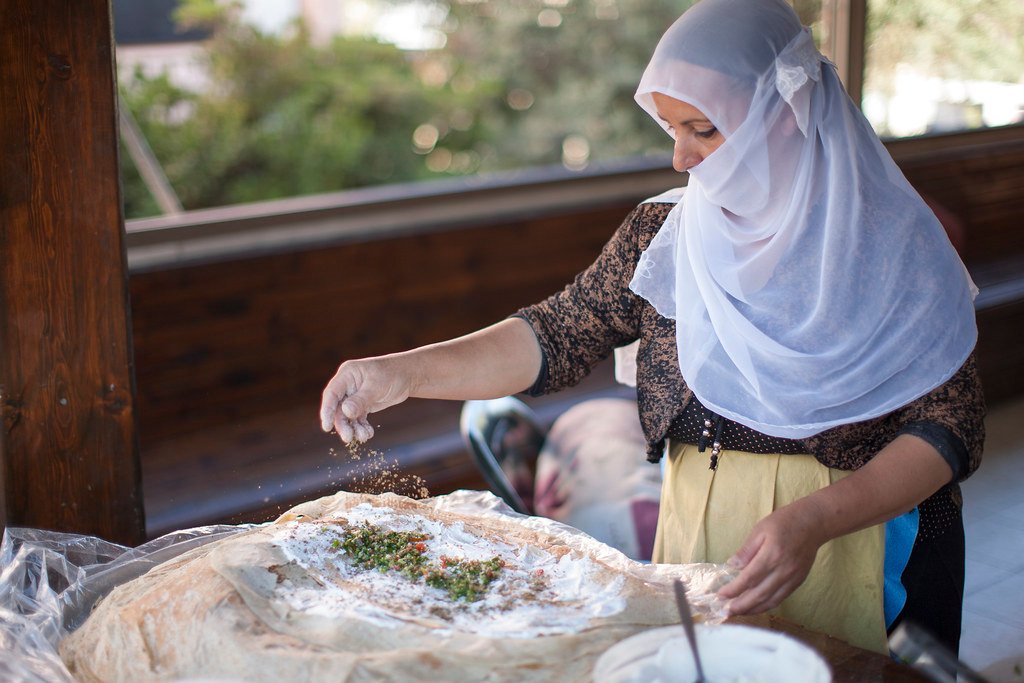The Start of the Story
On a dark night of February 13, 1021 AD, the sixth caliph of the Fatimid Empire and the sixteenth Imam of the Ismaili Shia sect, Abu Ali al-Mansur aka Al-Hakim bi-Amr Allah, left his palace in Cairo, the capital of his empire, and walked alone towards the city gates. He left in such a way that he never returned. Perhaps he went out for a walk or for meditation—historians are not certain about this. However, after his disappearance, his followers were divided about the knowldge of his disappearance. Various people made different speculations about him. According to the Ismaili Shia, including the Aga Khanis and the Bohras, he was killed that night by his enemies, and his body was hidden or made to disappear. On the other hand, another group within the Ismaili Shias claimed that their Imam, Al-Hakim bi-Amr Allah, was taken alive into the heavens and had gone into occultation. They believe that shortly before the Day of Judgment, he will return to Earth as the Mahdi for his followers, and will eliminate oppression, injustice, and evil from the world, ultimately establishing his religion and beliefs across the globe.
Cairo and the Birth of Druze Religion
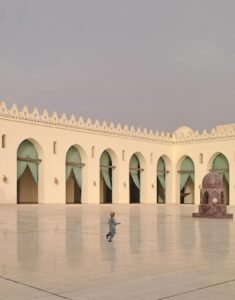
Let us talk about their brief but fascinating history and beliefs. Around four hundred years after the advent of Islam, in 1017 AD, a group within the Ismaili Shia community laid the foundation of a new sect or religion in Cairo, the capital of Egypt. For this purpose, one of Caliph Al-Hakim bi-Amr Allah’s companions, Hamza ibn Ali ibn Ahmad, supported him, and together they began to formally organize and develop their teachings. That same year, people were officially invited to join the movement. To spread their beliefs, they formed various missionary groups, which traveled to nearby regions to preach their faith. The central theme of their preaching was the absolute belief in the oneness of God, or Tawhid, and thus they began referring to themselves as Al-Muwahhidun (The Unitarians). Al-Hakim bi-Amr Allah also had a grand mosque built in Cairo in his name called al-Hakim Mosque, which still stands today in all its original glory. Inside the mosque, a painted image of Al-Hakim from that era still exists.
Al-Darazi: Founder of Druze?
During his rule in Cairo, an Iranian man named Muhammad bin Ismail al-Darazi joined his movement. Being a tailor by profession, he adopted the title “al-Darazi” means tailor. He began to distort and exaggerate the teachings of Al-Hakim and Hamza ibn Ali, eventually declaring Al-Hakim to be a divine incarnation of God. He also proclaimed Hazrat Ali, along with Prophet Muhammad, to be a prophet. Furthermore, he went so far as to consider the famous mathematician Pythagoras and the Greek philosophers Socrates, Plato, and Aristotle as prophets as well.
Al-Darazi eventually claimed prophethood for himself and began calling himself “the Sword of Faith.” Through his rhetoric, he managed to gather a considerable number of followers. However, his claims and teachings were not acceptable to Al-Hakim bi-Amr Allah. One of Al-Hakim’s other companions, Hamza ibn Ali, wrote books against al-Darazi and declared him a disbeliever. In 1018 AD, al-Darazi was killed, and it is widely believed that his death was ordered by Al-Hakim bi-Amr Allah due to his extreme and heretical teachings. After that, Hamza ibn Ali was also killed. Finally, on February 13, 1021 AD, Al-Hakim bi-Amr Allah himself either disappeared or was killed. In the years that followed, although this new sect or religion faced opposition and resistance, the popularity of the Druze faith began to rise, particularly within Al-Hakim’s close circle. In 1021 AD, Hamza ibn Ali was killed as well, and it is also widely believed that he was executed on the orders of Al-Hakim bi-Amr Allah as well.
After Al-Hakim bi-Amr Allah, Hamza, and al-Darazi, the leadership of the Druze faith passed into the hands of Baha al-Din al-Muqtana. In 1043 AD, Baha al-Din declared,
“From now on, no new individual can enter the Druze faith.”
Druze Geography
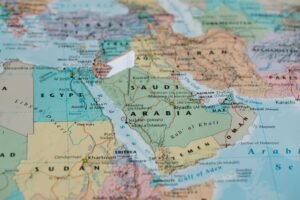
Since then, like Judaism, no outsider can convert to the Druze religion. Only those whose ancestors adopted the Druze faith before 1043 AD are considered part of the community, and the religion continues solely through their descendants. During the Crusades (1095 to 1291), the followers of the Druze religion strongly supported the Muslim armies—first those of Salah al-Din Ayyubi (Saladin), and later the Mamluk forces. Then, in 1305 AD, Ibn Taymiyyah, a prominent figure of Salafi Islam, issued a fatwa declaring the Druze to be disbelievers based on their beliefs, and thus excluded them from the fold of Islam. In 1860, violent conflict broke out between Druze and Christian groups in Syria, resulting in heavy casualties on both sides. In 1910, Druze fighters in Lebanon and Syria launched a major rebellion against the Ottoman Empire, which was brutally suppressed. After the establishment of Israel, the Druze—many of whom were already residing in Palestinian territories—gradually became part of the Israeli state. During the Arab-Israeli wars, the Druze were the only Arab ethnic group that fought alongside Israel against Arabs and Palestinians. In the present day, the Druze are officially part of Israel’s armed forces, and the government under Benjamin Netanyahu provides them with full security and protection.
Most scholars and sects in the Muslim world consider the Druze to be non-Muslims, while the Druze themselves also prefer to identify not as Muslims but as Druze or Al-Muwahhidun (the Unitarians). However, the prominent Islamic institution Al-Azhar University has issued a fatwa recognizing the Druze as Muslims. During the rule of former Syrian President Bashar al-Assad, who belonged to the Alawite Shia sect, the Druze were considered loyal to the Syrian government. However, after his regime was overthrown, the Druze initially supported the new Sunni-led government. Later, tensions emerged between the two, and in July 2025, Israel launched several attacks on the new Syrian government in open support of the Druze community there.
Beliefs
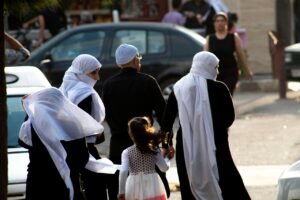
The followers of the Druze religion keep their worship practices and religious beliefs secret, which makes it somewhat difficult for historians to obtain fully authentic information about them. For this reason, the Druze are considered one of the world’s secret religions. The Druze refer to themselves as Al-Muwahhidun, meaning those with unwavering belief in the oneness of God. They also fully believe in the concept of Wahdat al-Wujud (Unity of Being), which holds that God can manifest within human beings. The Druze consider Al-Hakim bi-Amr Allah to be their awaited Mahdi. Their most sacred religious text is Rasa’il al-Hikmah (Epistles of Wisdom), authored by Hamza bin Ali bin Ahmad and Baha al-Din al-Muqtana. This book consists of 111 epistles. The Druze place of worship is called a Khalwah, and their central Khalwah is located in Al-Bayda, Syria which is called The Khalwat al-Bayada. No outsider can convert to the Druze faith, and intermarriage with non-Druze individuals is strictly prohibited.
Uqqal and Juhhal: Two Types of Druzes
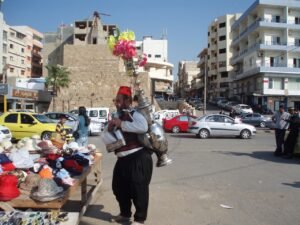
The Druze community is divided into two classes: the senior Druze, known as Uqqal (the wise or enlightened ones), and the general Druze, referred to as Juhhal (the uninitiated). Only the Uqqal are permitted to possess, read, and interpret Rasa’il al-Hikmah, making them the religious scholars of the Druze community. The Druze also read the Holy Qur’an and believe in Batinism—the idea that sacred texts have two meanings: one apparent, which anyone can understand, and one hidden, which only the Uqqal can comprehend.
The Druze strongly believe in the doctrine of reincarnation. According to their belief, when a person dies, their soul is reborn in another body, and this rebirth always occurs within the Druze community. Thus, the cycle of life continues. They do not believe in Taqiyyah (religious dissimulation) and consider it to be equivalent to lying.
Belief in Prophethood
The Druze belief in prophethood is highly complex and difficult for historians to fully comprehend. While they acknowledge Prophet Muhammad as a prophet, they also regard his cousin, Hazrat Ali, as a prophet. In addition, the Druze faith elevates several historical and religious figures to the status of prophets, including Pythagoras, Aristotle, Socrates, Jesus, John the Baptist, Saint Mark, Saint Luke, Saint Matthew, Hamza bin Ali, Muhammad bin Wahb al-Qurashī, and Baha al-Din al-Muqtana.
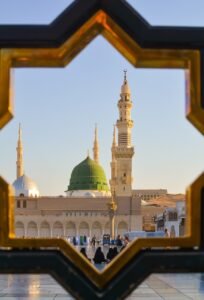
Belief in the Mahdi
According to Druze beliefs, Al-Hakim bi-Amr Allah—the sixth caliph of the Fatimid dynasty and the sixteenth imam of the Ismaili sect—is the awaited Mahdi. He went into occultation on February 13, 1021, and will reappear near the end of times from China. He will gather his Druze followers, wage war against non-Druze, and establish the Druze faith across the entire world. He is also believed to eliminate all forms of evil from the world, allowing only goodness and the Druze people to remain.
The Druze consider Wednesday a sacred day. They deem alcohol, pork, and tobacco products—such as cigarettes—as forbidden (haram). The tombs and graves of their revered spiritual figures are referred to as maqam (sacred sites), and visiting these tombs is called ziyarah (pilgrimage). Among these, the most sacred site is the tomb of Prophet Shu’ayb, which is located in Israel. Every year, from April 25 to 28, Druze pilgrims visit this tomb. In addition to this, they have other holy sites located in Syria, Lebanon, and Jordan.
Status of Women
In Druze beliefs, women hold a special and distinct status. Every Druze woman has the full right to acquire education. Additionally, she is allowed to buy and sell property and run her own business. However, Druze women are also strictly required to marry by the age of 21. Premarital sexual relations are strictly forbidden.
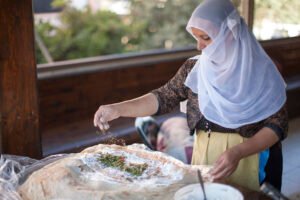
Festivals
Among the Druze community, Eid al-Adha is celebrated with great enthusiasm and fervor. It is observed after the pilgrimage to the shrine of Prophet Shu’ayb, typically in April or May. However, Druze do not perform animal sacrifice during Eid al-Adha. For them, the meaning of Ramadan fasting is symbolic and spiritual—rather than physically abstaining from food, they believe a person should always consider themselves as if in a state of fasting, avoiding sins at all times.
The Druze legal practices largely resemble the jurisprudence of Imam Abu Hanifa.
Druze Between Israel and Syria
In the modern democratic era, Druze are regarded as loyal citizens wherever they reside. For example, in Israel, Druze individuals serve in both military and civil positions. Similarly, during the rule of Bashar al-Assad in Syria, they were considered loyal to his regime. After the fall of Assad’s government in 2025, they initially welcomed the new Sunni administration, but tensions later arose, leading to violent conflict and heavy casualties on both sides. In that conflict, Israel supported the Druze by launching airstrikes against the Sunni government in Syria. In Lebanon and Jordan as well, the Druze community is seen as supportive of their respective governments. However, the majority of the Druze population is found in Syria, followed by a significant presence in Israel.
If you have any knowledge about the Druze, please feel free to share your guidance in the comment box below.
If you are interested in reading about Yazidi Religion of Lalish, Please Click here . . .
Sources
- Bryer, D, and David R.W. Bryer. 1972. “The Origins of the Druze Religion.” PhD thesis, University of Oxford.
- Hirschberg, H.Z. (1981). The Druzes, p. 330-348 in Arberry, A.J. & Beckingham. C.F. (editors), Religion in the middle east: Three religions in Concord and conflict, Vol 2. Cambridge: Cambridge University Press.
- Firro, Kais M. (2011). The Druze Faith: Origin, Development and Interpretation. Arabica 58, p. 76-99.

